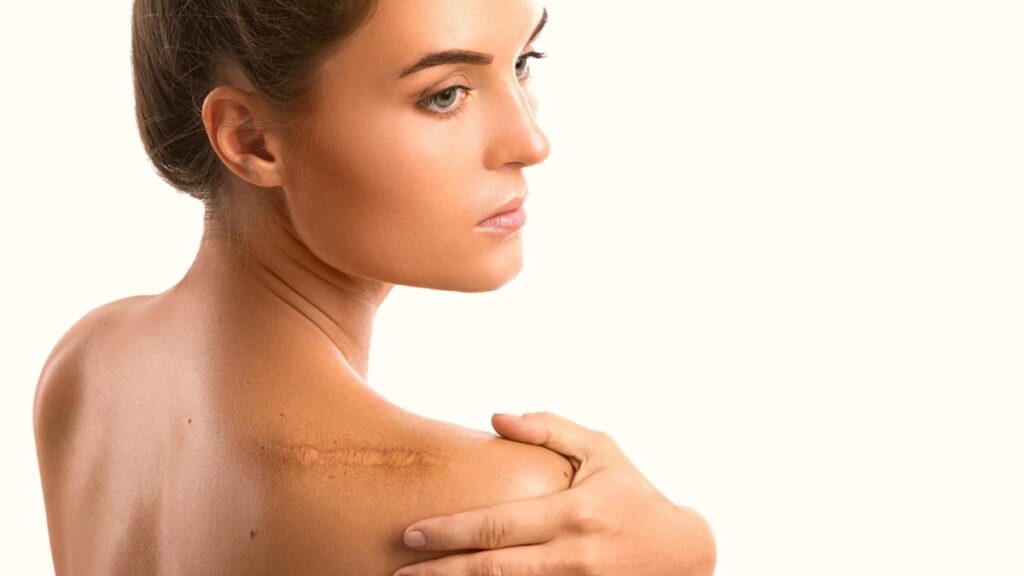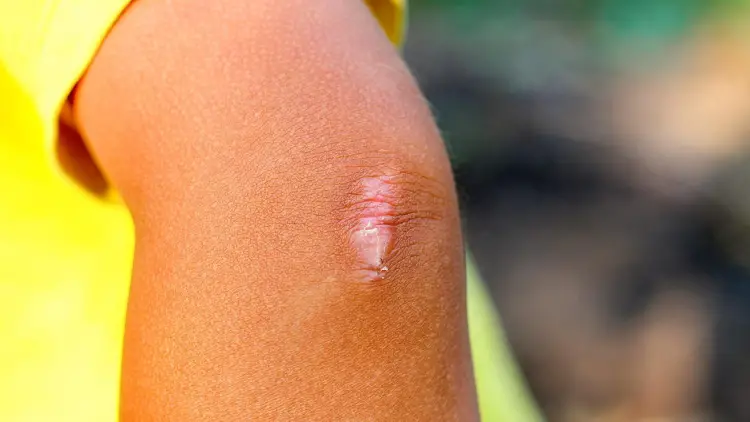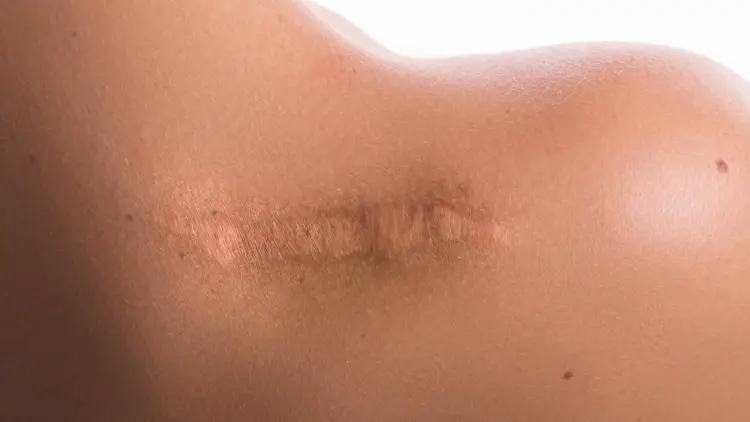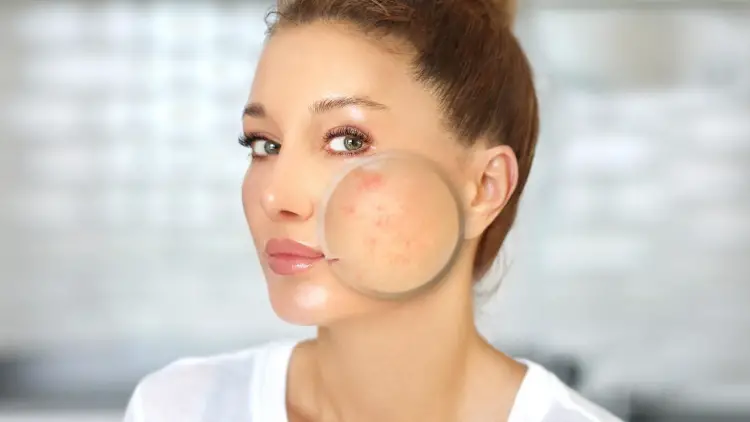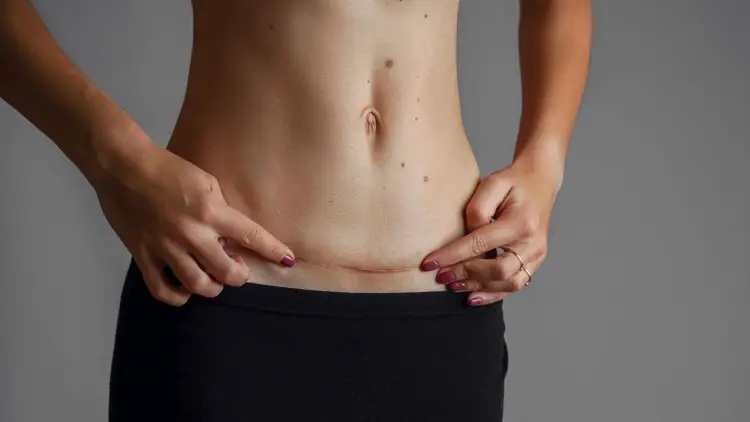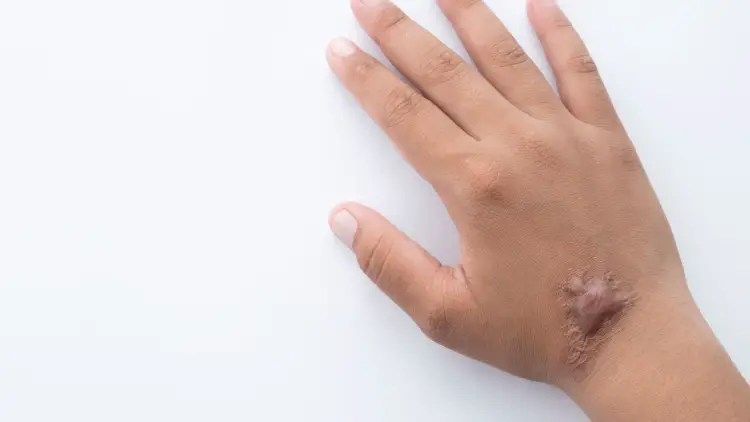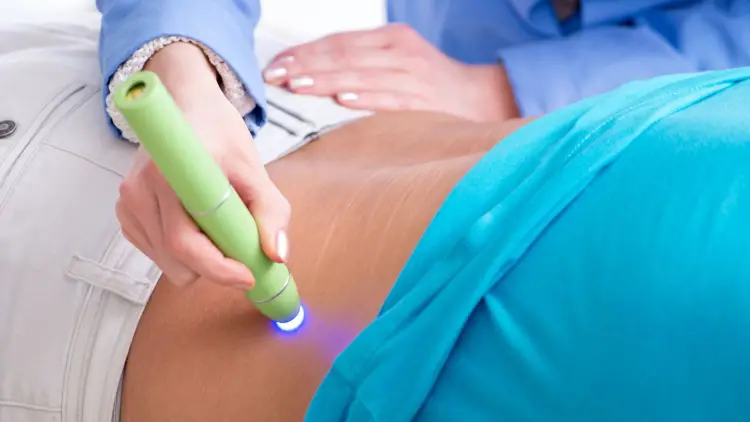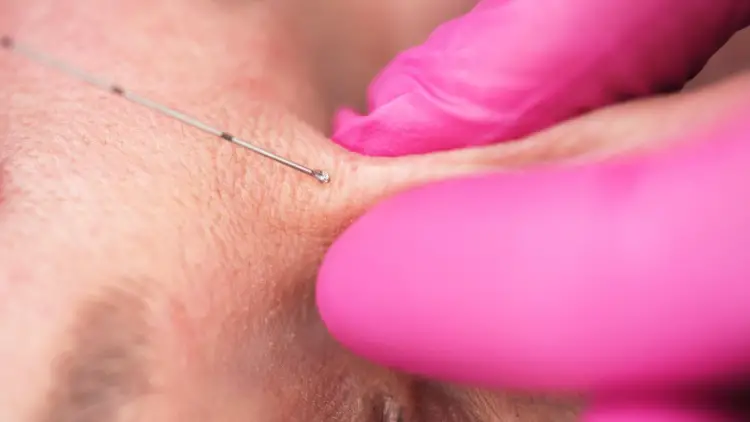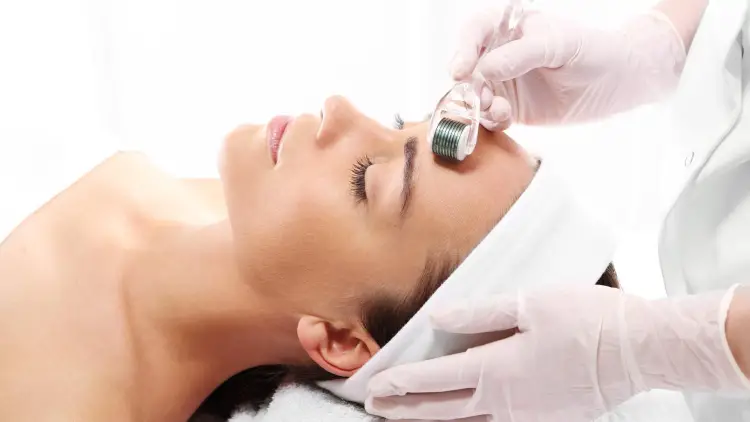Scars can can cause someone to be self conscious about their appearance, particularly if it’s located in a prominent spot. For that reason, many people seek treatment to have scars removed. Scar removal on young skin is one thing, but what about scare removal for seniors? Can scars be removed on old skin?
Yes, scars can be removed on old skin (to some degree), but the healing process is longer than that of a younger person’s skin.
As we move about our daily lives, travel, and enjoy sports, our skin takes a lot of damage. Sometimes, this damage can present itself in the form of scars, which may be of different origins. Some scars are a result of an injury, some the surgery, and some may even develop in place of old scars. Needless to say, scars are not very sightly, so you may want to remove your scars and restore a healthier look to your skin.
We can get scars at any point in life, but at no point are they more prominent than when the skin starts losing its elasticity in old age. The skin naturally loses some of its collagen and elastin every year, and you may even lose subcutaneous fat. When this happens, scars, which are mostly made of collagen, may become more prominent, may protrude from the skin, or have a fairly different color (they are usually very pale) to the rest of your skin.
What Exactly Are Scars?
Scars are simple collagen-rich structures that appear in places of the previous injury. Over time, our bodies have adapted to being injured by providing extra security to the injured place – indeed, scars have a lot of collagen, almost as much as cartilage, for example. This gives them more durability against any agents that may repeat the injury but also makes them look different than the rest of your body.
Why Do We Get Scars?
So, while scars are there to protect you and stop you from bleeding, a simple wound could do the same trick. However, with more serious injuries, your body will necessarily have to form stronger tissue to prevent the skin from tearing at the place of the previous injury or even to prevent the next injury from being as serious.
Of course, the body does not discriminate between a surgeon’s scalpel and asphalt that you may have fallen on when younger and earned a few scars yourself. This means that you will also develop scars during a facelift in your 50s or a simple injury in your 20s. Of course, doctors can control incisions, and reduce the prominence of the scars that follow surgery.
How to Remove a Scar
Although your body does not discriminate between different injuries, you may be able to see a difference between different kinds of scars that may be present on your body. Scars can be wide, narrow, indented, protruding, and of various colors and shapes. There are many different ways to remove them as well.
Some people are concerned about the reddish appearance of their scars (hypertrophic scars), but this is no reason to be concerned. Most scars are reddish as they form and mature and will change to a lighter color within two years from the initial injury. Depending on the type and the size of the scar, the ways to remove them differ as well.
Injury Scar Removal
Injuries usually leave scars that are wider and of irregular shape. These scars may form in places of cuts and scrapes and will mostly appear on the outer side of joints, especially elbows and knees, although injuries to the face will scar as well. These scars are best treated with silicone patches and topical products and may require dermabrasion to be fully removed.
Incision Scar Removal
Incisions leave scars as well. Depending on the depth of the incision, the place of the incision, and the suturing skills of your surgeon, your scar may be of different widths. In most cases, scars to very mobile places on the body will heal faster and be less noticeable.
Scars on skin parts that you regularly move, such as your face, joints, and places where skin overlaps leave larger and wider scars, especially as these incisions take longer to heal: this means more collagen is deposited. Using finer sutures, a lot of moisturizer, and a silicone-based product significantly reduces the visibility of these scars.
Acne Scar Removal
Acne scars are specific because they attach the skin to the underlying tissues as they form. Although a great solution for skin firmness, most people do not like the way acne scars look. Indeed, they can be indented and appear in high numbers, compromising your looks and the way you feel about your face.
Your doctor will use a special technique called subcision to remove this type of scar. This means undercutting the tissue that attaches the scar to the underlying tissue, letting the skin assume a more even texture.
C-Section Scar Removal
C-Section is a very common scar, especially as more women than ever decide to deliver their babies through Cesarean. This scar is usually placed low enough so that it can be covered by your underwear or even a swimming suit. However, if you do not like the way it looks, post-op excision of the scar is possible to reduce its width. After this, dermabrasion, microneedling, and even laser scar removal may further improve your looks.
Keloid Scar Removal
Keloid scar is a special type of tissue that forms on scars themselves. This tissue grows out of proportion to the rest of the scar. It can either be in line with the scar itself, making it especially pronounced, or it may even grow on the surface of the skin. Excision is the only way to remove it, but beware that keloid may come back.
Methods for Scar Removal
Different types of scars and different needs to revise them have created a number of procedures for scar softening or removal. Here are some of the most common ways to remove a scar:
Chemical Peels for Scar Removal
- ANTI-AGING RESURFACING PADS – These pads come fully saturated with a solution containing 20% of pure Glycolic Acid. They exfoliate the skin and reduce scars, bumps, lines and wrinkles, leaving the skin feeling softer and smoother.
- BOOSTED WITH VITAMINS B5, C & E – Powerful antioxidants that will leave your skin fully hydrated and that will help repair photo-damage from UV rays.
Chemical peels may help remove scars of moderate depth and size. These peels can help remove bumps from the scarred skin and will speed up the cellular turnover of your cells. This, in turn, will result in scars that are less prominent, have a milder texture, and may even help completely remove mild scars.
Silicone-Based Solutions
- Advanced silicone scar ease solution; improves the color and texture of new and old scars; moisturizes the scar tissue smoothing its appearance; reduces redness, itching and discomfort making the skin soft and smooth; medical grade silicone is recommended by hospitals, plastic surgeons, burn centers, dermatologists and cosmetologists for the healing of scars with maximum efficiency.
- Visible result after 1st use; ideal for various types of scars and scars trauma such as hypertrophic scars, surgery scars (including breast augmentation scars), stretch marks, c section, pregnancy scars, post tattoo, post acne scars, burn scars, accidental scars, tox patch scars, keloid scars and others; helps to restore the original beauty of the skin in just 6 weeks for new scars and from 2 to 4 months for old scars.
Silicone-based topical solutions and patches may help during the initial healing of the scar itself. These patches and lotions can help the scaring tissue preserve its moisture and help it heal faster. Faster healing time then reduces the amount of collagen that is deposited in the scar tissue and makes it less prominent. This is the perfect first step in scar healing.
Topical Steroids for Scar Removal
- Silicone sheets work but are ugly. Scarguard is a real silicone sheet you paint on. It dries in seconds to an invisible silicone nano-sheet and also delivers Vitamin E. Many scar creams are onion extract. Others are silicone creams. They rub OFF… NOT IN. Studies show sheets work MUCH better, but only if you can actually use them. Make your silicone sheet easy and invisible!
- The #1 technology choice of plastic surgeons and dermatologists, Scarguard paints-on, cleans the skin, and immediately dries to an invisible nano-sheet that you can even cover with makeup. Use to reduce scarring after the skin heals over or on old scars that are overgrown.
In case your scars do not heal fast enough, they may turn into hypertrophic scars. As scars form, they deposit a lot of collagen into the surrounding tissue. If they take longer to mature, they may deposit too much collagen, and you may develop thick scars with uneven edges that can even protrude from the skin.
Topical steroids, when injected or applied on top of a scar, can break down collagen molecules and reduce scar size before it turns into a hypertrophic one.
Laser Scar Removal
Laser scar removal is also a possibility. These lasers are usually skin resurfacing lasers. They deliver some damage to the skin, in turn making it increase collagen production and heal faster. These lasers are safe to use and may help tone down the scar appearance and change the properties of the skin around the scar itself, contributing to less contrast and less visibility of the scar itself.
Dermal Fillers for Scar Removal
Although it may seem counterintuitive, dermal fillers can actually help reduce the visibility of the scar. These fillers are used on sunken scars, such as those that you get when having your appendix removed. The space under the scar is filled with a filler to make the scar less sunken and restore proper skin and body contour. This is a very common procedure.
Microneedling Scar Removal
Microneedling works in a similar way to some forms of laser scar removal. Microneedling punctures your skin using needles anywhere from 0.25 mm to 2 mm in length. These needles injure the skin, making it boost collagen and elastin production. The needles can also be used to deliver medicine and PRP straight into the skin, giving the ingredient better coverage and absorbability.
Scar Revision Surgery
Scar revision surgery is the most radical approach on the list. It is a very common procedure, especially on big scars or scars that can be seen on the face. In the revision surgery, a very fine suture is applied. Scar revision surgery can also correct some botched surgeries, such as botched abdominal liposuction, abdominoplasty, and lifts of all sorts. After all, these procedures revise the improper healing and scarring of the tissues.
Scar Removal FAQs
How Can I Remove Scar Naturally?
Removing scars naturally can be difficult to achieve. You should use very good moisturizing agents throughout the day. In addition to this, you can do in-home treatments with fruity acids, as well as apply sunblock every day to reduce the damage to the scars coming from the sun. This, over time, will help significantly reduce the appearance of your scars.
Are Scars Permanent?
Although some scars may fade over time, especially if they have formed in the upper layers of the skin, most of the scars will stay there for life. For this reason, it is necessary to take good care of the skin and reduce the need for any surgical and nonsurgical procedures that you may need. In any case, almost any scar can be removed by means of the right surgeon and the right procedure.
Does Vaseline Get Rid of Scars?
There is no proof that Vaseline can get rid of scars. However, it may be able to reduce their size by speeding up the healing process and by helping them retain moisture. This, in turn, means less collagen is deposited in the scarring tissue and a smaller scar.
How Do You Lighten Dark Scars?
If you have darker scars, you should know there are ways to lighten them. Using skin bleaching agents and skin bleaching lasers can help reduce the amount of pigment in your skin and help reduce the visibility of your scars. Dark scars are a common occurrence, especially after local inflammation (such as acne).
Final Considerations
Every scar tells a story, but not everybody likes the stories that their scars tell. Luckily, there are many procedures that can help you reduce the visibility of your scars. They can be nonsurgical, topical, and even surgical, and they can all give good results. For best results, always start healing your scars as early as possible and keep them safe from the sun.

